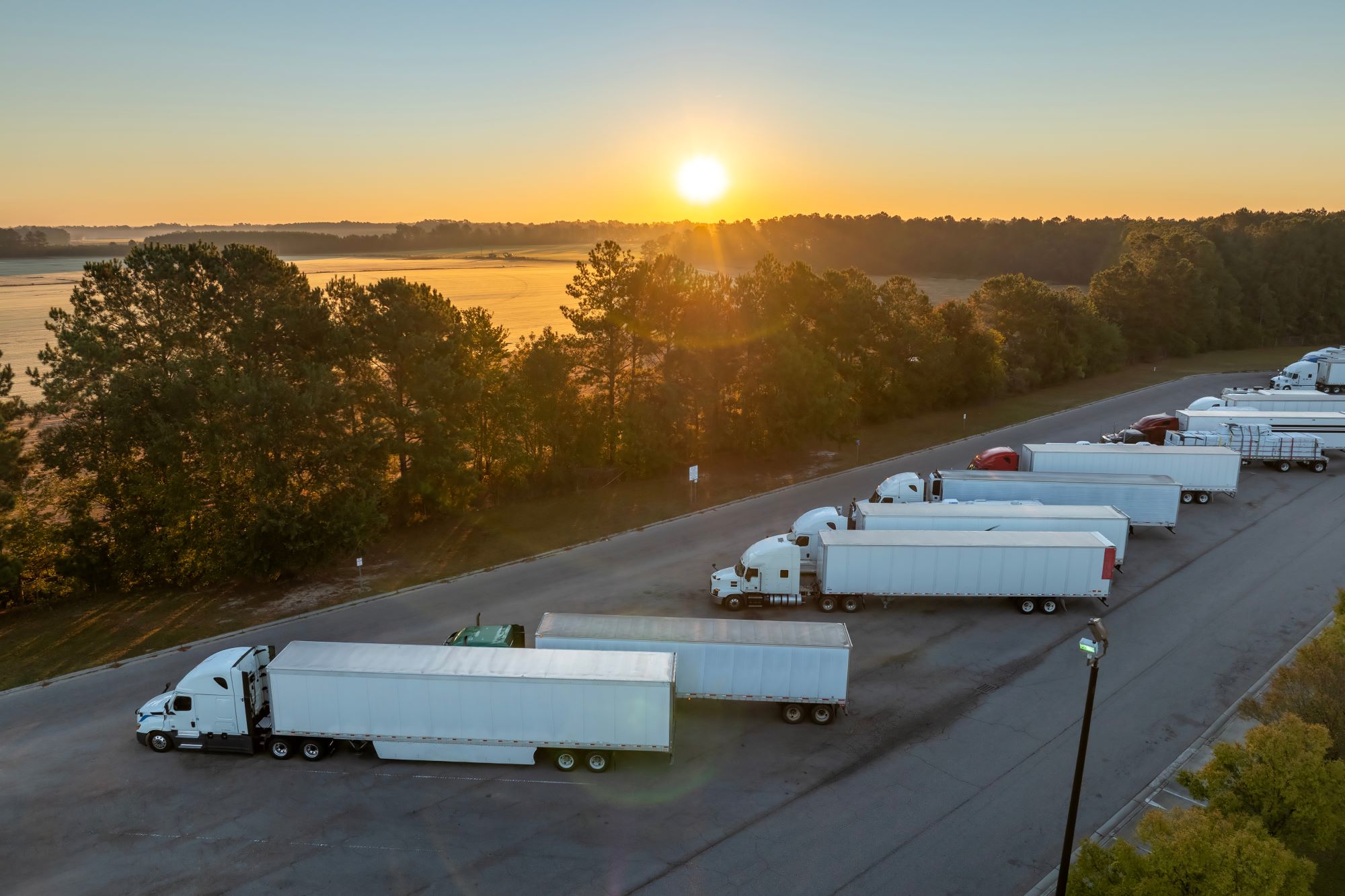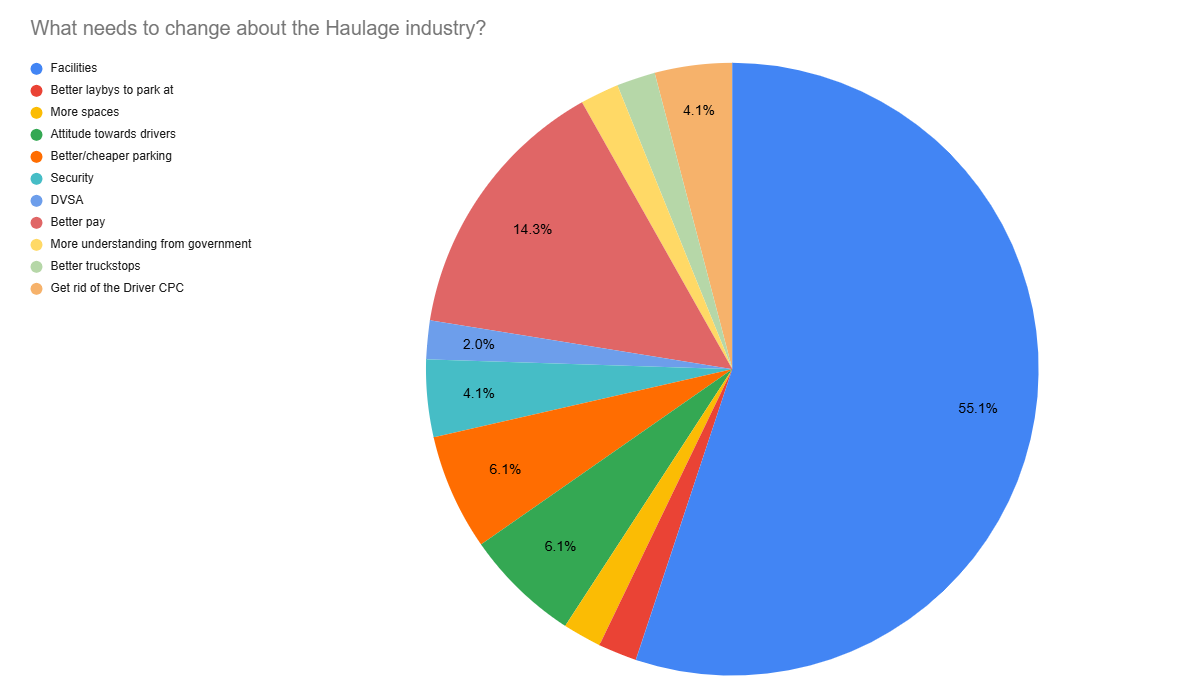
Susie Jones
Șoferii de camioane solicită reforma industriei
Creat: 05.02.2025
•
Actualizat: 05.02.2025
În prezent, femeile șoferi de camioane grele din Regatul Unit reprezintă doar 1% din totalul șoferilor - o cifră care a crescut cu 144% în ultimul deceniu, pe măsură ce sunt introduse mai multe inițiative pentru a promova diversitatea și a reduce deficitul de șoferi.
Un articol Fleetpoint descrie numeroasele modalități prin care industria ar putea atrage mai multe femei în industrie:
Cultivarea unui mediu de lucru favorabil și primitor.
Modernizarea infrastructurii și a facilităților.
Acorduri de lucru flexibile și favorabile familiei.
Crearea unor căi clare de dezvoltare profesională.
În ciuda acestui fapt, șoferii de pe [social media] (https://www.facebook.com/photo/?fbid=988050383364634&set=a.482170237285987&locale=en_GB) au susținut că aceste provocări de lungă durată din industrie trebuie abordate pentru toată lumea înainte de a fi introduse noi inițiative pentru a elimina deficitul de șoferi.
Lipsa șoferilor - unde se află industria acum?
Penuria de șoferi a fost o problemă persistentă pentru industria transporturilor, dar după COVID-19 și Brexit, aceasta a atins niveluri critice. În 2024, în Europa, Norvegia și Regatul Unit lipseau peste 233.000 de șoferi de camion - un număr care va depăși 745.000 până în 2028 din cauza îmbătrânirii forței de muncă.
Industria încă se luptă cu consecințele și lucrează la punerea în aplicare a unor noi inițiative de promovare a diversității, de îmbunătățire a condițiilor de muncă și de reducere a deficitului de forță de muncă.
Guvernul a implementat aproximativ [33](https://www.gov.uk/government/topical-events/hgv-driver-shortage-uk-government-response/about#:~:text=We%20extended%20dangerous%20goods%20(ADR,to%20take%20refresher%20training%20now.) acțiuni pentru a face față deficitului de șoferi de vehicule grele în Regatul Unit. Inclusiv, dar nu limitat la:
Creșterea eficienței lanțurilor de aprovizionare existente.
Oferirea de asistență și formare pentru noii șoferi de vehicule grele.
Extinderea capacității de testare a șoferilor de vehicule grele.
Îmbunătățirea proceselor de acordare a licențelor.
Îmbunătățirea condițiilor.
Asigurarea stabilității lanțului de aprovizionare cu carburanți.

Ce trebuie să se schimbe? Șoferii au un cuvânt de spus.
49% dintre șoferii de pe rețelele de socializare au susținut că schimbările trebuie implementate indiferent de sex - cu 27% dintre șoferii de TIR de sex feminin de acord că sectorul trebuie să evolueze pentru toată lumea. 24% au declarat că locul de muncă nu mai este atrăgător, subliniind nevoia de schimbare în industrie. Așadar, ce doresc șoferii să vadă schimbat?
Facilități
55% au dorit să vadă facilități îmbunătățite pentru toată lumea:
"Trebuie să existe facilități mai bune și un tratament mai bun. Întreaga industrie este o ruină, iar noi suntem maltratați."
"Facilitățile sunt groaznice pentru toți șoferii, bărbați și femei."
În noiembrie 2024, un [sondaj Transport Focus] (https://www.britsafe.org/safety-management/2024/uk-truckers-why-more-action-is-needed-to-make-their-working-lives-safer-and-healthier#:~:text=Improving%20roadside%20facilities&text=Drivers%20have%20long%20been%20telling,asked%20expressed%20dissatisfaction%20with%20both.) a constatat că două treimi dintre șoferi erau nemulțumiți de facilitățile din stațiile de camioane - facilitățile murdare, opțiunile alimentare slabe și lipsa spațiului social cauzând probleme semnificative.
Guvernul și industria de transport au luat măsuri semnificative, investind 14 milioane de lire sterline pentru a stimula inovarea și a îmbunătăți condițiile de muncă.
În octombrie 2024, 23 de solicitanți selectați au primit până la 4,5 milioane de lire sterline pentru a-și îmbunătăți stațiile de camioane. Modernizările vor include noi dușuri, restaurante și elemente de securitate îmbunătățite pentru a le oferi șoferilor o mai mare liniște. În plus, sistemul va crea aproximativ 430 de locuri de parcare pentru vehiculele grele de marfă.
Salariu
Salariile mai bune au ocupat locul al doilea pe listă, 14% dintre șoferi susținând că o creștere a salariilor ar încuraja un număr mai mare de persoane să intre în industrie:
"Faceți-o atractivă pentru toată lumea, măriți salariile."
Majorarea salariilor va avea un cost semnificativ pentru liderii din industrie. Dacă salariul mediu al șoferilor de camioane ar crește în conformitate cu salariul de trai național, operatorii de flote s-ar putea confrunta cu o sumă suplimentară de 1,5 miliarde de lire sterline pe an.
În ciuda acestui fapt, investițiile vor îmbunătăți ratele de retenție, vor reduce cheltuielile de recrutare și costurile de formare. Oferirea unor salarii mai mari nu numai că ar face profesia mai atractivă pentru noii veniți, dar ar recunoaște și rolul esențial pe care îl joacă șoferii în menținerea lanțului de aprovizionare.
Atitudine față de șoferi
De-a lungul anilor, opiniile publicului cu privire la șoferii de camion au evoluat semnificativ. Viața unui camionagiu a fost adesea romanțată în filme și în mass-media populară, ceea ce i-a făcut pe mulți să creadă că le este ușor. Cu toate acestea, ei au fost prezentați și ca eroi harnici, o imagine care s-a deteriorat în timp.
Spre sfârșitul secolului al XX-lea, percepțiile s-au schimbat pe măsură ce condițiile de muncă s-au înăsprit, iar șoferilor de camioane li s-au atribuit stereotipuri nedrepte - adesea din cauza unei reprezentări eronate în mass-media și uneori din cauza câtorva șoferi fără experiență. Aceste stereotipuri negative au fost atenuate în timpul pandemiei COVID-19, când a crescut aprecierea publică pentru șoferii de camioane.
Astăzi, există respect pentru drumari - cu toate acestea, industria rămâne afectată de stereotipuri și atitudini negative. Un aspect pe care 6% dintre șoferi ar dori să îl vadă schimbat:
"Gândindu-mă la Covid, am fost considerați eroi, dar după aceea, totul a revenit la normal. Nu e de mirare că șoferii actuali, bărbați și femei, vor să părăsească industria. S-au săturat de tratamentul mizerabil cu care se confruntă zilnic."
"Ar fi frumos să nu fii tratat ca un gunoi."
În ultimii ani, ascensiunea social media a început să pună la îndoială și să schimbe percepțiile negative. Mulți șoferi folosesc platforme precum TikTok și Instagram pentru a împărtăși informații despre rolul lor, a risipi concepțiile greșite și a câștiga respectul celor din afara industriei.
Feedback-ul arată nevoia urgentă a industriei de transport de mărfuri de a implementa schimbări pentru a atrage și păstra șoferii noi și existenți. Sub-reprezentarea femeilor rămâne o provocare semnificativă, iar investiția în facilități care să răspundă nevoilor lor este crucială. Cu toate acestea, aceste investiții trebuie să fie incluzive și să beneficieze întregii forțe de muncă.

În ce țări există un deficit de șoferi de camioane?
Țările din Europa au fost cele mai afectate, multe companii de camioane neputându-și extinde activitatea deoarece nu pot găsi lucrători calificați.
Europa are o populație de șoferi de camioane îmbătrânită, cu o [vârstă medie de 47 de ani] (https://www.iru.org/news-resources/newsroom/half-european-truck-operators-cant-expand-due-driver-shortages#:~:text=The%20EU%2C%20Norway%20and%20the,an%20average%20age%20of%2047.). O treime dintre camionagii au peste 55 de ani și se așteaptă să se pensioneze în următorii zece ani. În plus, mai puțin de 5% dintre șoferii de camioane din Europa au mai puțin de 25 de ani - ceea ce evidențiază golul care va rămâne odată cu pensionarea unei forțe de muncă în curs de îmbătrânire.
Există o zi de apreciere a șoferilor de camioane?
[HGV Drivers Day] (https://https://snapacc.com/newsroom/hgv-drivers-day-2025-giving-truckers-a-voice/) are loc pe 22 ianuarie și a fost înființată de NN1 Personnel. Ziua își propune să sărbătorească șoferii de camioane și tot ceea ce fac ei pentru economie și societate.
Care sunt perspectivele industriei transporturilor rutiere pentru 2025?
Din blogul nostru, [The Road Ahead for 2025] (https://snapacc.com/newsroom/the-road-ahead-for-2025-truck-industry-trends-to-expect/), ne așteptăm ca în acest an să se evidențieze în industria transporturilor rutiere următoarele aspecte:
Adoptarea avantajelor AI.
Combaterea diferenței de gen și a deficitului de șoferi.
Promovarea unei industrii mai ecologice.
Creșterea transportului de marfă pe distanțe lungi.



